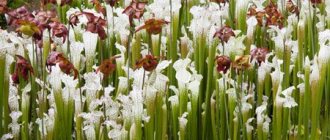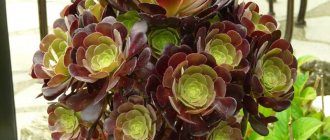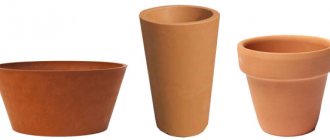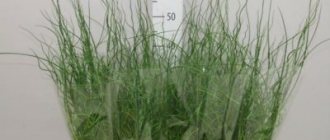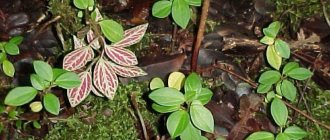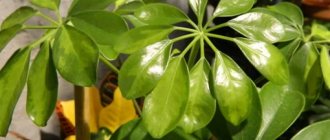Kind of like cleistocactus (Cleistocactus) unites approximately 50 species of different plants. In nature, they can be found in South America, and mostly in Uruguay. This type of cacti can be easily distinguished by its columnar, rather thin shoots, which branch at the base. On the surface of these stems there is a huge number of areoles, so the cactus itself is densely covered with white-yellow spines.
You can also distinguish this type of cacti by its rather unusual flowers. There are many scales on the surface of the tubular flowers. However, in most cacti these flowers do not open, and this phenomenon is called cleistogamy (which is what gave rise to the name of the genus). Over time, the bud becomes similar to a rather long, brightly colored cone. Inside such a flower, seeds are formed as a result of self-pollination.
Cleistocactus - variety of forms
A representative of the cactus family , Cleistocactus or Cleistocactus, came to us from South America. The genus Cleistocactus consists of 50 species of cacti, differing in stem shapes.
Among them you can find plants with thick columnar shoots, candle-shaped forms and species with thin creeping stems.
All types of cleistocactus are united by soft, bristle-like spines that densely cover the stems.
The tubular flowers of the plant are covered with small scales and have a small entrance hole surrounded by short petals. They are distinguished by their bright colors of yellow, orange and red.
In the wild, tiny hummingbirds , capable of reaching the sweet nectar with their long beaks.
Interestingly, fruits are set inside unopened flowers as a result of self-pollination. This phenomenon is called “cleistogamy”.
Description
The cactus grows throughout Latin America; in the wild, the cactus can overgrow virtually any area, creating entire colorful carpets. The general public has known about cleistocactus since the distant 1861, when these plants were first discovered at the foot of the Andes chain.
Most representatives of the species have an upright growing trunk, which reaches as much as 4 meters, but only in the wild, since indoor cactus rarely exceeds a modest 40 centimeters in height. A characteristic feature of Cleistocactus can be considered the almost ideal shape of the stem, which grows like a cylinder.
The ribs are practically absent, which is why the cactus seems to be completely sloping. The relatively thin stem looks very slender, its width is no more than 10 centimeters. The spines are short and located close to each other, thereby creating a kind of fluffy cover along the entire length of the trunk.
Cleistocactus flowers do not have a specific dislocation; they are randomly located throughout the entire trunk of the plant. Blooming in late spring and summer, the cactus immediately produces many buds, each of which is painted in bright colors of pink or red.
To produce fruits, the plant does not require anything, since the cactus successfully self-pollinates, thereby growing large, round fruits. The bright fruits contain a pleasantly smelling, juicy pulp, which has more than once saved weary travelers right in the middle of the desert. Domesticated cleistocactus has several known varieties, each of which can be grown right in the apartment.
Types of Cleistocactus
Most often in indoor culture you can find the following types of cleistocactus:
Strauss Cleistocactus , Cleistocactus strausii - the most popular and, perhaps, the most decorative species, called the “silver candle”. This is a columnar cactus, densely strewn with bristly silvery spines.
They wrap the stem so tightly that the cactus looks like a fluffy pillar. As it grows, the stem is always surrounded by a group of young, gently pubescent shoots. The cactus blooms with tubular carmine flowers. It begins to bloom in the 5th or 6th year, reaching 30 cm in height.
Cleistocactus tupizensis , Cleistocactus tupizensis - a well-tillering candle-shaped form. The brown-green stem is covered with spines of various shades from pink to red-red. Blooms with tubular red flowers.
Cleistocactus baumannii - candle-shaped cactus up to 30 cm tall. The spines are yellow and light brown. Fiery red flowers are about 7 cm long.
Emerald-flowered cleistocactus , Cleistocactus smaragdiflorus - an interesting erect or drooping form with yellow-brown spines up to 2 cm long. Capable of growing up to 1 meter in height. Blooms 4 or 5 years after planting. Pink-red flowers have a green edge.
Cleistocactus winteri , Cleistocactus winteri, is a creeping form with hanging stems reaching 1 m in length. They are densely pubescent with bristle-like spines of golden yellow color. The orange-pink flowers have an opening multi-petaled shape. This type is very good for hanging planters.
Ritter's Cleistocactus , Cleistocactus ritteri, is a showy cactus with long white spines. It blooms when it reaches 40 cm in height with yellow-green flowers.
Botanical description and homeland of the plant
Cleistocactus is a South American genus of cacti found in the foothills of the Andes, hilly and rocky areas of Peru, Uruguay, Bolivia, and western Argentina. Columnar-shaped stems stand erect or spread along the ground, branching from the base. The height ranges from 30 cm to 3 m, and the diameter reaches 9 cm. There are 15-25 ribs, they are weakly expressed. Numerous closely spaced areoles produce bristly spines that almost completely hide the stem underneath. The needles are white, grayish, golden or light brown, which gives the cactus additional charm.
Cleistocactus Strauss photo in nature
The name of the plant is based on the Greek word “κλειστή”, which means “I close”. The fact is that the buds that appear, covered with scales, practically do not open, but become like cones. They still self-pollinate inside. This phenomenon in botany is called cleistogamy, which influenced the assignment of this name to the genus. The color of the flowers is deep red or coral. Then the same bright fleshy fruit is formed, filled with elongated black seeds.
In culture, cleistocactus is unpretentious, but in order for development to be normal, you will need to create the proper conditions and pay a little attention to the plant.
Features of care
Cleistocactus does not have high care requirements. However, it is necessary to comply with some conditions for its maintenance. Also, as it grows, you should cut off old stems that have stopped growing.
After secondary shoots grow the base of the cactus You need to cut it off at the very base and sprinkle the cut surface with fungicide. When the cut dries, it is necessary to transplant the plant into a new container, and cover the remaining stump with gravel.
Vegetative propagation of cleistocactus
For propagation, root shoots or a cut crown 10-15 cm long are used as cuttings. Use a sharp knife, the blade of which must be calcined with fire or spilled with a strong solution of potassium permanganate for disinfection. On the mother plant, sprinkle the cutting area with charcoal, and on the cutting, let it wrap with film. Plant immediately in a pot with soil for an adult plant. There is no need to deepen it much. While the cutting does not have roots, it may fall, so prop it up with a match.
Choosing a location and lighting
It is difficult to find such a big lover of direct sunlight as Cleistocactus . He loves to bask in the sun all year round. A south window is an ideal placement option.
The more light the plant receives, the denser the spines grow and the higher the likelihood of abundant flowering. The cactus needs frequent ventilation. In hot weather, it is best to take it out into the garden or onto the balcony.
In summer, any temperature is good for the cactus, and in winter it should be from +10 to 12 °C. This will help put the cleistocactus into a dormant period. Remember, the plant does not tolerate low temperatures - below 5 °C.
We have prepared this material for you on how the process of fern reproduction is carried out.
Alocasia has medicinal properties. Read more about this and the rules for caring for it.
Cleistocactus cactus: home care
Like most cacti, representatives of this genus are unpretentious in care. Even a novice gardener can grow a real beautiful flower.
Cleistocactus in the greenhouse
However, to ensure intensive growth, the plant needs to create certain conditions:
- Content temperature. The optimal temperature for keeping a flower in summer is 22-26 degrees. In winter, the plant goes into a dormant state, which requires the temperature to drop to 10-12 degrees.
- Illumination of the room. Considering that the Cleistocactus cactus is a representative of hot countries, it needs a lot of sunlight, regardless of the season. When placing such a plant in an apartment, it is better to place it on the south side, near the windows.
- Watering mode. Considering the plant’s dryness and negative attitude towards waterlogging, it should be watered only after the soil has dried. Watering should not be abundant, and its frequency depends on the temperature of the content. In summer, watering will be more frequent; in winter, it should be significantly reduced. Watering should be done with warm, settled water.
- Air humidity. Optimal flower content requires moderate humidity (45-50%). In the summer, when the air is excessively heated and dry, it is recommended to regularly spray the plant, giving it the opportunity to absorb moisture.
- The soil. To ensure good growth, the plant needs loose, acid-neutral soil. It should be well drained, not retain moisture and allow air to pass through. When purchasing soils in a store, you should give preference to soil mixtures for succulents and cacti. When making it yourself, you need to mix: two parts each of turf and leaf soil, one part peat soil and add four parts coarse sand (river). Also, before planting in a container, it is necessary to make a drainage layer of expanded clay or fine gravel. This will help get rid of excess moisture in the soil and protect the root system from waterlogging and rotting.
- Fertilizer. In the warm season, it is necessary to fertilize the soil regularly, adding a small amount of cactus fertilizer every week. It is not recommended to fertilize during winter dormancy.
Watering and humidity
The cactus should be watered as the soil dries completely. In summer, one watering per week is sufficient. In autumn and spring, cleistocactus is watered once a month. In winter, when temperatures are cool, watering almost stops, otherwise poorly drying soil can cause root rot. Water for irrigation should be settled and without lime.
Like all cacti, the plant does not require high humidity .
Cleistocactus really like weekly
Transfer
Cleistocactus needs loose, neutral soil. You can use ready-made soil for cacti or prepare the soil mixture yourself. It is desirable that the soil consists of:
- 1 part peat soil;
- 2 parts of turf land;
- 2 parts leaf soil;
- 4 parts coarse river sand.
young cleistocacti every spring. After the plant moves into a pot with a diameter of 15 cm, it can be replanted every two years. The bottom of the pot must be covered with a drainage layer of broken shards, gravel or expanded clay and provided with drainage holes.
Growing Cleistocactus
To have such a prickly miracle at home, you can purchase seeds and plant them, following the instructions on the package. Summer, autumn, winter, spring are equally good for planting seeds.
You can also propagate a cactus using “babies”.
- They are carefully cut off without being pricked by needles and left to dry for seven days.
- There is no need to cover the cuttings.
- After this time, you can transfer the “baby” to a pot with a substrate for cleistocactus.
- There must be expanded clay at the bottom.
- Provide support for the plant in the form of a frame.
Young trees need to be replanted once a year, preferably in the spring. A mature plant needs to be transplanted into a larger pot only when the roots become cramped in their old habitat.
Pests and diseases
Dangerous for cleistocactus : feltworm, spider mite, mealybug. Pests should be removed with a brush, and the plant should be treated with an insecticide (“Aktara”, “Agrivertin”, “Aktellik” or others). When processing, special attention should be paid to the thickened base and top of the stem.
Due to too much watering or too low a temperature, black or brown spots may appear on the shoots of cleistocactus - this is stem rot. It is necessary to cut out the damaged areas and treat the plant with a fungicide.
Possible problems
If the rules of care are violated, atypical diseases may occur:
- The thorns are turning pale - poor lighting.
- The plant does not grow at all - the soil is waterlogged in winter or drought in summer.
- The tip of the stem wrinkled , spots of rot appeared on the trunk - waterlogging at low temperatures.
- Cork spots appeared on the stem - hypothermia, lack of moisture in the hot season, pest damage.
- The stem has stretched into an irregular shape - poor lighting or a hot room in winter.
Cleistocactus can become a favorite of many gardeners. Exquisite beauty and modesty distinguish this beautiful plant. Give it a little love and attention, be patient - and the cleistocactus will reveal to you the rare beauty of its unusual flowers.
And for the most curious, we suggest you watch a video about cleistocactus
